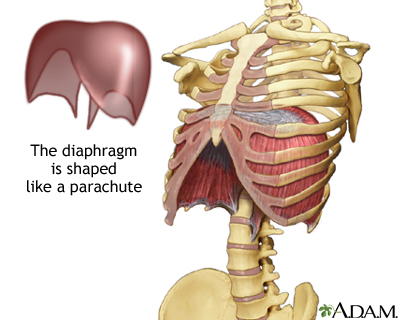
May’s Community Meeting featured Osteopathic Manual Practitioner Ricki Richter who came to talk to us about mild Traumatic Brain Injury (mTBI) through an osteopathic and movement lens.
About Riki Richter
- Riki is an Osteopathic Manual Practitioner and Movement Based Rehabilitation Instructor at Synergy Sports Medicine in Toronto.
- She has been a Pilates and Yoga instructor for over 20 years!
- She sustained a brain injury when she was seven years old and was at SickKids for a week.
- She lives with two cats and two lovebirds.
- To learn more, you can visit Riki’s website: https://www.rikirichter.com/
What is Osteopathy?
- Osteopathy is a form of manual therapy with the goal of maximizing health by treating the source of dysfunction in the body.
- Osteopathic practitioners combine their extensive knowledge of anatomy and the inter-relationships between body systems, while utilizing gentle hands-on techniques to improve health.
How Osteopathy may help mTBI symptoms
Following mTBI, it’s common to experience headaches, neck and shoulder pain and muscle weakness, among many other symptoms. There are a few simple and non-invasive osteopathic techniques which may make these symptoms more bearable.
First, let’s jump into the physiology behind the techniques. If you want to skip the science, scroll to the bottom of the post for five simple exercises.
Breathing & Its Effect on the Body
Blood Flow and the Brain
- Breathing affects blood flow throughout the body.
- Using the diaphragm (the primary muscle that controls breathing) with a directed inhalation is the most efficient way to breathe.
- During a directed inhalation, cerebrospinal fluid (CSF, fluid that bathes the brain and spinal cord) moves up to the brain, bringing nutrients and clearing waste.
- Maximizing this flow of CSF can decrease headache severity!

The Lymphatic System
- The lymphatic system functions to maintain fluid balance within the body and also plays a role in immune system function.
- During shallow breathing, there is less movement of the lymphatic fluid.
- The heart and pelvis have the deepest lymphatic systems within the body and they are completely dependent on breathing and movement to flow.
- We know sleep is important, but did you know that the lymphatic system is responsible for 60 per cent of increased drainage during sleep? This means that the body is clearing out more waste while you are (hopefully)sleeping!

5 Simple Exercises
1. 3D Breathing Exercise
Purpose:
Generally, most people breathe into their chest or maybe breathe into their belly. While belly breathing is seen as more ideal compared to simply breathing into the chest, 3D breathing helps with posture and improves body system flow. With practice, this will become second nature and may even minimize the severity of headaches!
Method:
- Sitting tall in a chair or standing with good posture, bring awareness to how you breathe by holding a stretching band or towel placed around your ribcage just below the sternum.
- Inhale and feel the strap expand as the ribcage moves out to the sides and back.
- Exhale, keeping the strap tight while breathing all the way out.
- Focus on keeping the breath slow and silent.
2. Tight Neck/Poor Sleep Exercise
Purpose:
To improve poor sleep or tight upper two vertebrae.
Method:
- Sit at a table placing the right elbow on the tabletop.
- Place the right thumb under the right cheekbone.
- Lean head into thumb and allow the thumb to slide up the side of your face to the ear.
- Repeat on left side.
3. Shoulder Exercise:
Purpose:
To loosen tight shoulders.
Method:
- Place fingers up and under collarbone (see picture below to help locate the collarbone).
- Add some pressure by placing the opposite hand on the wrist.

Neck Exercise
Purpose:
To strengthen neck muscles to prevent the feeling of the head falling backwards.
Method:
- Sit with good posture, looking down so the nose is down and base of the skull is up.
- Maintaining the position of the head, move the neck so the head moves lightly back, giving the appearance of a double chin.
Posture Exercise

Purpose:
To improve circulation to and from the brain.
Method:
- Sit straight and allow the head to float over the ribcage and the ribcage to float over the pelvis.
- Inhale slowly through the nose using the 3D breathing technique (Simple Exercise 1) and exhale allowing the ribcage to recoil.
- Continuing to breathe, shift body weight forward so sit bones almost come off the chair.
Osteopathic College Student Clinic
Are you interested in seeing an Osteopathic Manual Practitioner but have a tighter budget? The Canadian College of Osteopathy holds a student clinic where you can be treated by a student overseen by an Osteopathic Manual Practitioner. Find more information about the student clinic, HERE
Julia Renaud is a ABI survivor with a passion for learning new things, trying new activities, and meeting new people – all of which have led her to writing this column. She is an advocate within the health care community and has been featured in the coffee table book, A Caged Mind by May Mutter, which exposes the nature of concussions through body painting.




